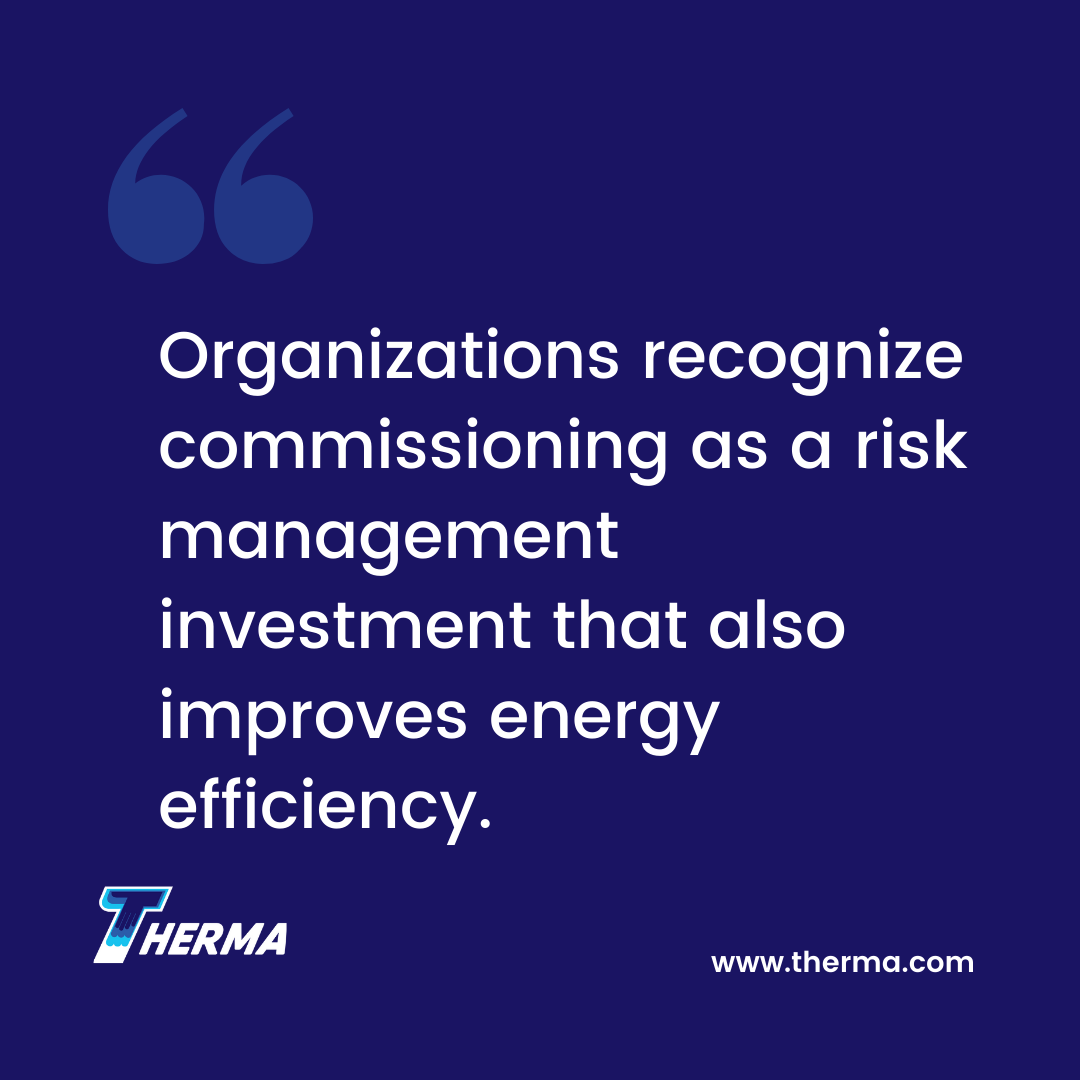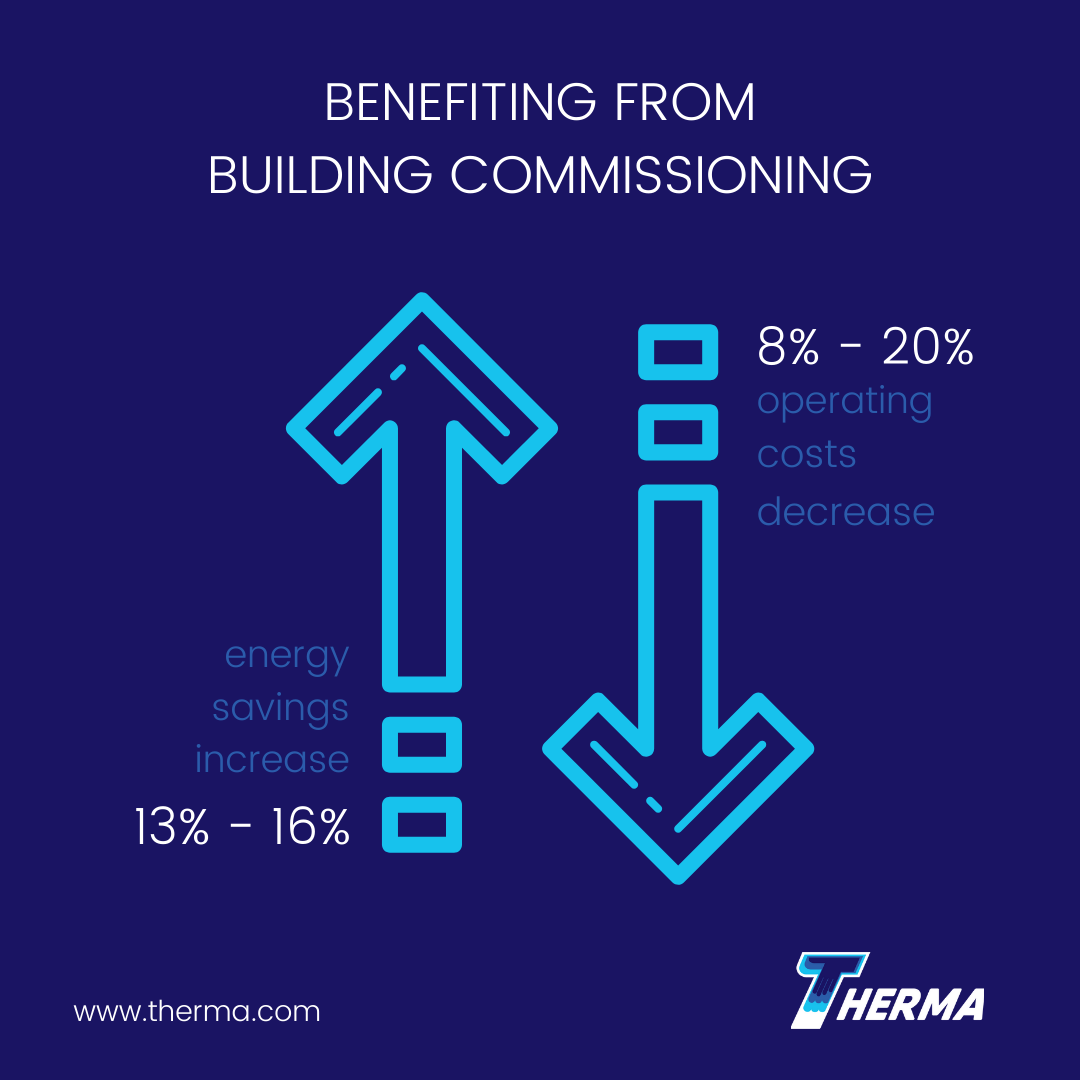Commissioning is for more than ships and HVAC systems. The building commissioning process ensures that all systems are designed, installed and function as the owner requires. It provides a wide range of benefits for new and existing building projects. Studies indicate that operating costs are lower for commissioned buildings by 8 to 20%, and energy savings increase by 13 to 16%.
Introducing Building Commissioning
Building commissioning is a quality assurance process that focuses on meeting the owner’s requirements and maximizing building system efficiencies. More than just an extensive punch list, commissioning includes design review, equipment verification, functional performance tests, detailed documentation and training for operations and maintenance personnel.
There are several types of commissioning, each dependent on the building’s current status. New building projects are commissioned. Recommissioning is for an established building that has been commissioned previously. Retro-commissioning refers to the process for an established building that has not been commissioned previously. The last type of commissioning is ongoing or continuous commissioning, a process that monitors equipment and facility components to address potential issues as they arise.
Building Commissioning Phases Focus on Action
Part of the benefit of commissioning a building is knowing that details have not been lost amid the surprises that are part of every major project. The process is broken into phases. Each phase directs the team’s attention to meeting their established milestones and correcting any problems along the way.
Phases found in the new building commissioning process include:
Pre-design
During pre-design, the owner establishes building requirements, and team members are selected. Teams should include the owner, Operations & Maintenance (O&M) representatives, design professionals and commissioning agents. The process requires that team members are involved from the very beginning in the pre-design and planning phases. The team creates the commissioning plan, including roles, responsibilities and milestones. The phases and tasks included vary by project but should be established early on.
Design
The commissioning agent continually reviews the building design process to verify that the owner’s expectations are met. With the building design established, a general contractor is selected.
Construction
This phase includes construction or remodeling of the building, equipment startup and testing, and training for O&M. From this point forward to the end of the commissioning process, any problems found are corrected, and systems are retested.
Acceptance
Training and documentation are complete, and the owner accepts the building.
Post-Acceptance/Project Occupancy
The owner is now responsible for operating and maintaining the building. If the commissioning plan included a period of review after the owner accepted the building, then the correcting and retesting process is continued and documented, and the final commissioning report is submitted.
Retro-commissioning and recommissioning phases focus on documenting the current state of the building and its systems, identifying items to improve or change, then testing the changes to verify that the results match expectations. Commissioning is useful when upgrading old equipment or addressing the fact that the building’s use has changed over time.

Why It’s Worth It
Many commissioning benefits, especially those that improve energy efficiency and occupant productivity, apply to both new and existing buildings. Benefits start early in the commissioning process and continue long after the space is occupied. From the beginning of the process, the team identifies potential problems and quickly corrects them. This reduces rework and the number of change orders during construction or retrofit.
Commissioning includes review and verification that equipment is sized correctly. Equipment testing ensures that individual equipment is functioning efficiently and that the combination of equipment and controls is optimized, improving the lifecycle of the equipment.
The inclusion of O&M early on, and the ongoing documentation during the process, benefit O&M. The detailed process produces better manuals and training than that found in non-commissioned projects. Once the building has been turned over to the owner, O&M staff are better able to keep the systems running as close to original efficiency as possible.
Occupants enjoy a safer and more productive environment. The commissioning process leads to systems that improve indoor environmental quality with better lighting, air quality, building pressure and temperature control.
And finally, organizations recognize commissioning as a risk management investment that also improves energy efficiency. Some utilities and insurance companies offer incentive programs to encourage owners to take advantage of the commissioning process. Green certifications, such as LEED, may even include commissioning as part of the qualification requirements.
Building commissioning is a team effort in crossing Ts and dotting Is. The decision to commission your next building project is an investment in quality with benefits seen long after completion.









